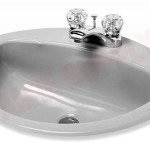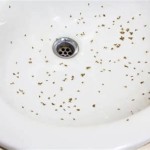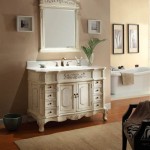Painting Bathroom Cabinets: A DIY Guide
Painting bathroom cabinets is a cost-effective way to update a bathroom's appearance without a full remodel. This project can be completed over a weekend with careful planning and execution. This guide provides a comprehensive overview of the necessary steps, materials, and techniques for successfully painting bathroom cabinets.
Preparing the Bathroom
Preparation is crucial for a smooth and successful painting project. Proper preparation prevents paint from adhering to unwanted surfaces and minimizes cleanup time.
- Remove all items from the cabinets and countertops.
- Cover the countertops, floor, and any fixtures with drop cloths or plastic sheeting.
- Ensure adequate ventilation by opening windows and using a fan.
Removing Cabinet Hardware
Removing hardware ensures a professional finish and prevents paint from accumulating on hinges, knobs, and pulls.
- Carefully remove all hinges, knobs, pulls, and other hardware using a screwdriver.
- Place the hardware in labeled bags or containers to avoid misplacement during reinstallation.
- If hardware replacement is planned, this is the ideal time to purchase new items.
Cleaning and Deglossing the Cabinets
Cleaning and deglossing are essential for proper paint adhesion. Grease, grime, and existing glossy finishes can prevent the new paint from bonding effectively.
- Thoroughly clean all cabinet surfaces with a grease-cutting cleaner, such as TSP (trisodium phosphate).
- Rinse the cabinets with clean water and allow them to dry completely.
- Lightly sand all surfaces with fine-grit sandpaper (180-220 grit) to create a slightly rough surface for better paint adhesion. This process is called deglossing.
- Wipe away sanding dust with a tack cloth.
Repairing Imperfections
Addressing any imperfections before painting ensures a smooth and flawless finish.
- Fill any holes or dents with wood filler.
- Allow the filler to dry completely according to the manufacturer's instructions.
- Sand the filled areas smooth with fine-grit sandpaper.
- Wipe away sanding dust with a tack cloth.
Priming the Cabinets
Applying primer creates a uniform base for the paint, improving adhesion and color consistency.
- Apply a thin, even coat of high-quality primer designed for use on wood or laminate surfaces.
- Allow the primer to dry completely according to the manufacturer's instructions.
- Lightly sand the primed surfaces with fine-grit sandpaper to ensure a smooth finish for the topcoat.
- Wipe away sanding dust with a tack cloth.
Painting the Cabinets
Applying the paint requires patience and attention to detail for a professional-looking result.
- Choose a high-quality paint designed for cabinets and trim, preferably in a semi-gloss or satin finish for durability and easy cleaning.
- Apply thin, even coats of paint using a high-quality brush or roller designed for smooth surfaces.
- Allow each coat to dry completely before applying the next.
- Typically, two to three coats are required for optimal coverage and color saturation.
Reinstalling Hardware and Final Touches
Once the paint is completely dry, the final steps involve reinstalling the hardware and making any necessary touch-ups.
- Carefully reinstall the original or new hardware.
- Inspect the finished cabinets for any imperfections or missed spots.
- Touch up any areas as needed with a small brush.
- Allow the touch-up paint to dry completely.
- Remove the drop cloths and protective coverings.
Choosing the Right Paint and Tools
Selecting the appropriate paint and tools is essential for achieving a professional and long-lasting finish.
- Opt for a high-quality acrylic or latex paint specifically formulated for cabinets and trim. Semi-gloss or satin finishes are recommended for their durability and ease of cleaning.
- Use high-quality brushes and rollers designed for smooth finishes. A small angled brush is useful for detailed work.
- Invest in a paint sprayer for a faster and potentially smoother application, especially for larger projects.
Safety Precautions
Observing safety precautions is crucial when working with paint and cleaning products.
- Always work in a well-ventilated area.
- Wear a respirator or dust mask to avoid inhaling dust and fumes.
- Wear safety glasses to protect your eyes from splashes.
- Dispose of paint and cleaning products responsibly according to local regulations.
.jpg?strip=all)
Painting A Bathroom Vanity Again Dream Green Diy

Diy Perfectly Painted Bathroom Cabinets In A Day

Easy Diy Bathroom Vanity Makeover Midwest Life And Style Blog

How To Paint Bathroom Cabinets Without Sanding 8 Vital Steps Grace In My Space

I Painted Our Wooden Bathroom Vanity What Learned Diy Tips Before Afters

Home How To Repaint A Bathroom Cabinet Cabinets Diy Painting

How To Paint Cabinets Last Painting A Bathroom Vanity Maison De Pax
.jpg?strip=all)
Painting A Bathroom Vanity Again Dream Green Diy

It S A Grandville Life Diy Painted Bathroom Cabinets

How To Paint Bathroom Cabinets Without Sanding 8 Vital Steps Grace In My Space
Related Posts







